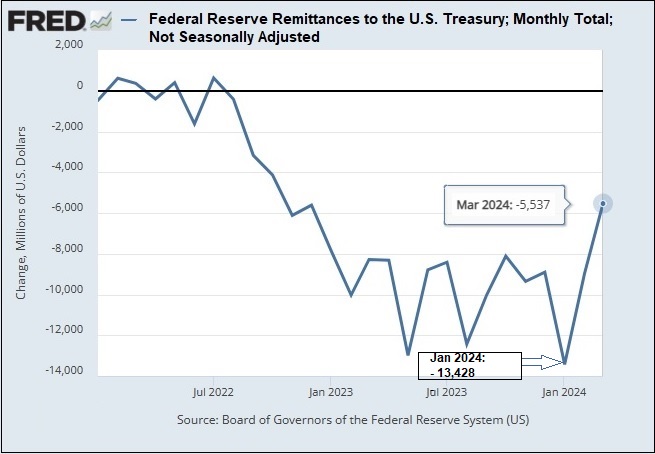Will COVID-19 lead to a gold standard?
by Alasdair Macleod, GoldMoney:
 Even before the coronavirus sprang upon an unprepared China the credit cycle was tipping the world into recession. The coronavirus makes an existing situation immeasurably worse, shutting down China and disrupting global supply chains to the point where large swathes of global production simply cease.
Even before the coronavirus sprang upon an unprepared China the credit cycle was tipping the world into recession. The coronavirus makes an existing situation immeasurably worse, shutting down China and disrupting global supply chains to the point where large swathes of global production simply cease.
The crisis is likely to be a wake-up call for complacent investors, who are content to buy benchmark bonds issued by bankrupt governments at wildly excessive prices. A recession turned by the coronavirus into a fathomless slump will lead to a synchronised explosion of debt issuance for which there are no genuine buyers and can only be monetised.
The adjustment to reality will be catastrophic for government finances, and their currencies. This article explains why the collapse in overpriced financial assets and fiat currencies is likely to be rapid, perhaps giving ordinary people in some jurisdictions an early prospect of a return to gold and silver as circulating money.
Introduction
My last article suggested that both financial assets and currencies would collapse together. the basis of this supposition is twofold: first, central bank policies are binding together the rise in financial assets with the maintenance of value in fiat currencies. Therefore, if one falls, they both fall. And secondly there is historical precedence for this when one examines The Mississippi bubble 300 years ago.
The timing for such a collapse appears to be imminent. Every day, more and more data confirm that the global economy is sliding into recession. So far, people have been ignoring this important development, but now that it is becoming hard to ignore, no doubt the coronavirus will be blamed. This is a mistake because the factors leading to a slump, principally the end of the expansionary credit cycle combining with trade protectionism against Chinese imports by President Trump, echo developments leading up to the Wall Street crash in October 1929. If that point is accepted, then clearly the world could be on the edge of a very deep slump exacerbated but not caused by the virus.
The coronavirus has all but closed down China’s economy. It threatens to become a pandemic with serious consequences for all other national economies and their fiat currencies.
The central issue flowing from the upcoming monetary crisis centres on the rating of government debt. Almost all welfare-driven states are in debt traps. They think price inflation is under control, because their colleagues in the statistics departments tell them so, allowing them to continue to run increasing budget deficits with apparent impunity. Central banks do not realise that very soon they will be the only buyers of their governments’ debt which they will pay for with newly minted money. The irony of repeating the mistakes of Germany’s Reichsbank in 1918-23 will be completely lost to them and the path of escalating failure will only encourage the pace of printing to be accelerated.
The latest bombshell, coronavirus, is a trigger perhaps for the markets to regain control from the statist price riggers. This has to be the first step to fixing broken economies. The Panglossians in the ranks of the banking and investment communities will be rudely awakened to find themselves staring down the barrel of economic reality. Only then is there a chance that neo-Keynesian lies will be discarded by one and all, and a retreat towards sound money commence.
There is unlikely to be much time. Even without the downhill kick of coronavirus a bear market in bonds could be a devastating event on its own in a period of less than a year. Inflation of fiat currencies and interest rate suppression have been the principal agents for ramping bond prices, which tells us that their collapse will undermine currencies as well, giving complacent investors a double hit. But what are we to measure a decline of fiat currencies against? Sound money of course, gold and silver, with other stores of value, such as bitcoin, favoured by tech-savvy millennials, who will be quick to observe and understand the debauchment of fiat money. And the sooner we throw out fiat currencies, the sooner we can revert to sound money, which is gold.
Changing values for government bonds
We shall take as our primary example the US bond market, because fiat currency fans believe that other than individual time-values it is the risk-free investment yardstick. The ten-year US Treasury bond yields less than 1.6%, but its future pricing raises some serious issues.
Before addressing risk, we should note that time preference theory tells us that possession of cash is always worth more than its non-possession. The discount of that future value is not significant if you part with it to buy a ten-year UST with a view to trading it out in the next few days. But if you buy it with a view to holding it as an investment, then its discounted future value does become relevant. We cannot know what this time preference is, because it can only be realised in an unfettered market, not a market manipulated by the Fed’s actions. But with history as our guide an annualised discounted value of about two per cent for a 10-year bond can be used as a rough guide.
Figure 1, which is a long-term chart of the yield on this bond, appears to indicate there is a solid floor in the region of 1.4% represented by the horizontal line joining points at July 2012, July 2016 and August 2019. This floor is about half a per cent less than our estimated time preference value.

With its yield currently 1.56%, there appears to be very little upside in the price, and we can understand why. And if we accept government estimates of CPI-U all items index rising at 2.5% (year to January) the yield should be closer to 4% and must therefore be heavily suppressed at current levels.
That is not all. While the general level of prices is an economic concept, it is not measurable; a fact which allows the Bureau of Labour Statistics, along with all other nations who use “standardised” CPIs to effectively goal-seek an official figure for its rate of change. Two independent analysts, Chapwood Index and Shadowstats confirm each other that a more realistic rate for monetary depreciation of the US dollar is not 2%, but about 10% annually.
But for the moment, investors believe the price inflation lie because they want to. When they begin to realise the official rate is pure fiction, then one would expect government bonds to reflect a far higher redemption yield. In other words, any upside in bond prices is strictly limited while the downside is substantial. As an illustration, a 10-year bond at the current yield would have to fall from par to $47.40 to yield a more realistic gross 10% to redemption.
Loading...


